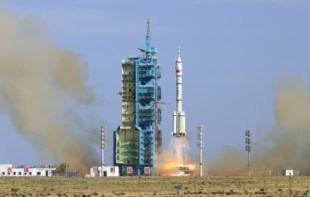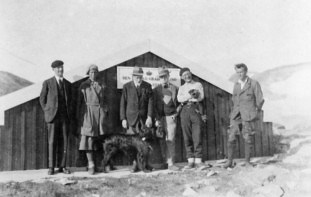Best known for his measurements of the 1919 solar eclipse that confirmed Einstein’s general theory of relativity, Arthur Eddington was also a Quaker and pacifist who thought deeply about religion and politics, as Matthew Stanley explains
From the halls of the Royal Astronomical Society to the shores of West Africa, Arthur Eddington was no ordinary scientist. He saw science not just as a series of intellectual goals but as a way of advancing humanity as a whole. He was the man who made Einstein famous and who first peered inside a star. He combined physics with astronomy to solve scientific mysteries, and helped to reconcile British and German scientists after the First World War. He inspired a generation to think about science not as a replacement for religion, aesthetics and emotion, but as a complementary partner contributing to a full appreciation of the world. Yet despite having played a major part in the growth of 20th-century science, Eddington’s legacy has often been misunderstood.
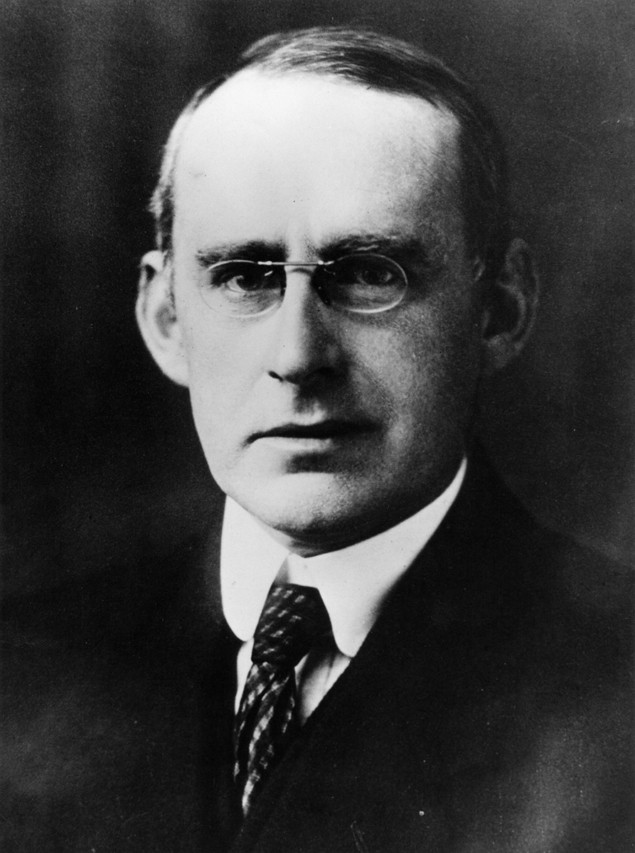
Arthur Stanley Eddington was born on 28 December 1882 in Kendal, England, to the family of a Quaker schoolmaster. After moving to the seaside resort of Weston-super-Mare, he was educated at home and in several small schools in the town. His talent for mathematics was quickly evident, and he won many contests and prizes, including a scholarship to Owens College, Manchester, at the age of 16. There he studied physics and mathematics with two of the great figures of Victorian science – Arthur Schuster and Horace Lamb – from whom he gained the scientific skills that would serve him throughout his life.
While in Manchester, Eddington also studied with the great Quaker leaders of the day, from whom he absorbed the religion’s values of pacifism, internationalism, mysticism, pragmatism and tolerance. All his mentors saw great potential in Eddington, and encouraged him to pursue further schooling at Cambridge, where he could be closer to cutting-edge research and have a better opportunity to build a career in science. Thanks to a scholarship in natural sciences, Eddington entered Trinity College, Cambridge, in 1902.
Very few Quakers had attended either Oxford or Cambridge by this time, and Eddington became something of a hero back home. At Trinity he was coached by the famous mathematician R A Herman, and became the first ever second-year student to become a “senior wrangler” by coming top of the mathematics tripos. He graduated in 1905, and was quickly sought out by William Christie, who was then Astronomer Royal, to be chief assistant at the Royal Observatory at Greenwich. It was traditional for outstanding Cambridge maths students to be given this job at the start of their careers, and Eddington was encouraged to pursue his own research projects in addition to observations, calculations and the occasional journey to determine the longitude of far-flung outposts of the British Empire.
Eddington undertook theoretical investigations in the increasingly important field of statistical cosmology, which had been pioneered by the Dutch astronomer Jacobus Kapteyn. The aim was to infer the dynamical structure of the Milky Way from a mathematical analysis of the movement of stars. Eddington’s work won him wide acclaim in the astronomical community, and helped shed light on the mysterious phenomenon of “star streaming”, in which nearby stars seem to move in two preferential directions. The phenomenon was explained later in terms of the different ages and motions of stars within spiral galaxies.
In 1913, aged 30, Eddington’s achievements in statistical cosmology put him at the top of the list to fill the vacant Plumian Professorship at Cambridge, which included the directorship of the Cambridge Observatory. Eddington, who never married, quickly moved himself, his sister and his mother into the rooms attached to the observatory. He was to remain Plumian Professor until his death over 30 years later.
Seeing inside a star
Eddington’s greatest achievements concerned a problem that had bedevilled scientists for centuries: what are stars? At the beginning of the 19th century, the philosopher August Comte famously declared that a description of the interiors of stars was the very definition of unattainable knowledge. Despite some successes using spectroscopy, many astronomers at the turn of the 20th century were forced reluctantly to agree with him.
Eddington’s greatest achievements concerned a problem that had bedevilled scientists for centuries: what are stars?
The spectroscope had revealed that stars are made of roughly the same familiar elements that exist on Earth, but almost everything else was unknown. Were they liquid or gas? What made them shine? Where did their energy come from? In 1916 Eddington began tackling these problems with the aim of developing equations that would describe the conditions inside a star. With such a model in hand, he could plausibly say that he understood how stars worked. He was certainly not the first to have this idea, and made full use of the results of predecessors such as J H Lane, Robert Emden and Karl Schwarzschild.
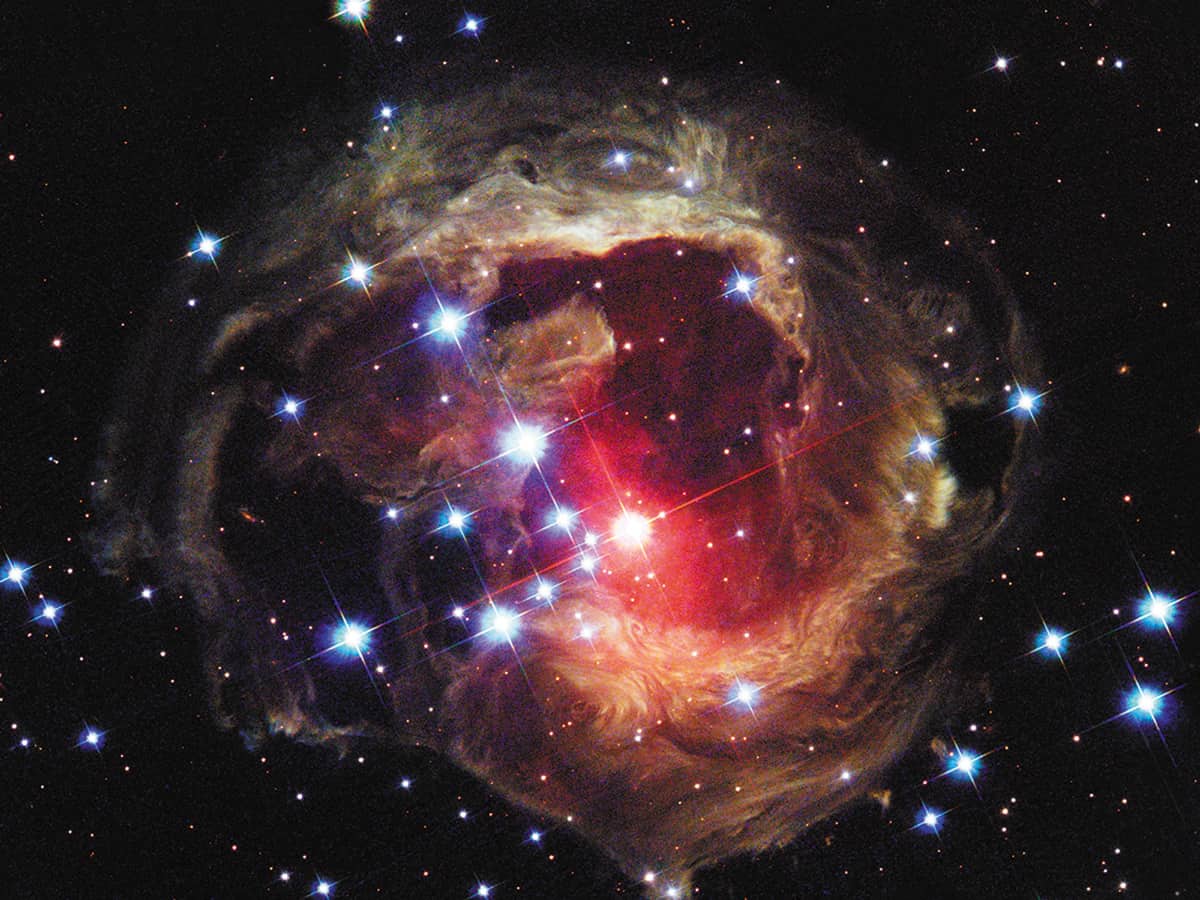
One of the perils of this project was that quantum mechanics was still in its infancy, which meant that a complete description of stellar interiors was impossible. This incompleteness led many physicists, such as James Jeans, to simply discard the problem as unworkable. Eddington, however, decided to press ahead and see what he could learn. To get round the problem of not knowing key facts, such as how stars generate their energy, he made a series of shrewd assumptions and approximations that allowed him to proceed as though he did know them. Although Jeans declared this approach to be unscientific, Eddington argued that if he found results that were consistent with observations, he would have learned something about which approximations were valid. The reach of astrophysics would thus have been extended.
Rather to his own surprise, Eddington found that his approximate model did reproduce many of the known characteristics of stars, including their size and temperature. Most dramatically, his model predicted a tight mathematical relationship between the masses and luminosities of stars. This calculation was based on the naïve assumption that stars obey the perfect-gas law, which is the simplest physical behaviour possible for a body of gas.
Eddington had hoped that any differences between his predictions and observations would indicate how stellar behaviour departed from the perfect gas law. However, his predictions seemed to apply to virtually all the stars then known – a dramatic success for a theory built on such tentative grounds. His complete theory allowed the temperature, density and pressure to be calculated at all points inside a star, and Eddington argued that it was so useful for further astrophysical investigation that it should be retained.
Eddington’s contemporaries were amazed at what he had accomplished, and marvelled at his physical intuition about which assumptions were useful and which were problematic. When criticized as a sloppy thinker, he would always respond that his theories were not meant to be complete, but were instead tools to allow further scientific investigation. His goal was not finality, but further exploration.
Critical comments
In the process of developing his stellar models, Eddington sought to overturn the then-current thinking about the sources of stellar energy. Jeans and others defended the model that had been developed by Lord Kelvin and Hermann von Helmholtz, in which a star’s heat and light come from the energy liberated as it contracts under gravity. This was the only energy source that seemed possible based on classical mechanics. Eddington, however, speculated broadly about the qualitative and quantitative consequences of phenomena that were then purely hypothetical, such as nuclear fusion and proton–electron annihilation.
When critics objected that the core of a star could not be hot enough to allow fusion to occur, Eddington told them to “go and find a hotter place”.
While admitting that his theories relied on unknown – and perhaps unknowable – facts about the interiors of stars, Eddington argued that simple pragmatism could help determine when speculation would be useful. He famously combined powerful common-sense reasoning with a rapier wit: when critics objected that the core of a star could not be hot enough to allow fusion to occur, he told them to “go and find a hotter place”. His models provided the foundation for the later investigations of Hans Bethe, Fred Hoyle and others, who finally grasped the details of stellar fusion.
Despite disagreements, Eddington’s models were eventually accepted as a powerful tool for further investigation, particularly concerning stellar evolution. When his predictions of the diameters of giant stars were confirmed by Albert Michelson in 1920, astronomers became convinced of Eddington’s intuitive, exploratory style. Fundamentally, this methodology allowed him to circumvent the poorly understood nuclear processes that were at work inside stars, while Jeans and others remained hamstrung by their attachment to classical physics. Eddington gave a full description of his theory in his 1926 book The Internal Constitution of the Stars, which became essential reading for an entire generation of astrophysicists.
Eddington’s subsequent work on astrophysics centred again on the structure of stars, which prompted further clashes with physicists like Jeans and E A Milne. He particularly wanted to extend his models to include new insights from quantum mechanics, notably “quantum degeneracy”, which governs the behaviour of particles in very dense materials. This work led to Eddington’s famous dispute in the early 1930s with the young Indian physicist Subrahmanyan Chandrasekhar, who was then a research student at Cambridge.
Eddington rejected Chandrasekhar’s conclusion that quantum degeneracy could limit the mass of stars, and Chandrasekhar’s description of this incident portrays Eddington as a rather cruel and dogmatic figure. But it was somewhat unfair to Eddington, whose students and colleagues remembered him as encouraging, welcoming and genial. He was, however, famously vigorous in intellectual debate, which Chandrasekhar may have mistaken for personal animosity. Eddington’s criticism seems to have been based on a suspicion that a purely mathematical derivation from quantum theory was not enough to explain the daunting physical paradoxes that were apparently part of degenerate stars. However, subsequent work upheld Chandrasekhar’s approach, for which he shared the 1983 Nobel Prize for Physics.
Eddington: in his own words
- I believe there are 15 747 724 136 275 002 577 605 653 961 181 555 468 044 717 914 527 116 709 366 231 425 076 185 631 031 296 protons in the universe and the same number of electrons.
- An electron is no more (and no less) hypothetical than a star.
- We cannot pretend to offer proofs. Proof is an idol before whom the pure mathematician tortures himself. In physics we are generally content to sacrifice before the lesser shrine of Plausibility.
- Life would be stunted and narrow if we could feel no significance in the world around us beyond that which can be weighed and measured with the tools of the physicist or described by the metrical symbols of the mathematician.
- I could no more ram religious conviction into an atheist than I could ram a joke into [a] Scotchman.
- If an army of monkeys were strumming on typewriters, they might write all the books in the British Museum.
- There are no purely observational facts about heavenly bodies.
- We do not argue with the critic who urges that the stars are not hot enough for this process; we tell him to go and find a hotter place.
- Something unknown is doing we don’t know what.
- Oh leave the Wise our measures to collate. One thing at least is certain, light has weight. One thing is certain and the rest debate. Light rays, when near the Sun, do not go straight.
Relativity and war
When Eddington began his pioneering investigations into stellar physics in 1916, Europe was being shaken by the horrors of the First World War. No scientist – not even Eddington – could escape its impact. As war raged, he became embroiled in a highly political controversy within the British astronomical and scientific communities. Many astronomers, notably H H Turner at Oxford, argued that scientific relations with Germany and Austria should be permanently ended due to their conduct in the war. Eddington, a Quaker pacifist, struggled to keep wartime bitterness out of astronomy.
He argued that the lines of longitude and latitude pay no heed to national boundaries and pointed out that science is a quest for truth that cannot be held back by crude matters of politics. He also reminded his colleagues that they knew many German scientists personally, and that it was absurd to claim that those friends were suddenly untrustworthy barbarians. Unfortunately, he was virtually alone among British scientists in advocating internationalism, and was the only astronomer to correspond with colleagues in enemy and even neutral countries throughout the war.
Eddington’s pacifism caused him severe difficulties, especially when he was called up for conscription in 1918. He claimed “conscientious objector” status based on his Quaker pacifism – a position that was recognized by the law, if somewhat despised by the public. However, Eddington’s conscription had already been deferred once before owing to the importance of his astronomical work, and the authorities refused to issue a second deferment based this time on religion. Only the timely intervention of the Astronomer Royal Frank Dyson and other high-profile figures kept Eddington out of prison.
Einstein and the eclipse
It was because of his determined efforts to maintain international scientific ties that Eddington was the only British scientist to receive news in 1916, via the Dutch physicist Willem de Sitter, of a new theory of gravity that was being developed in Berlin by a talented young physicist called Albert Einstein. The new theory was general relativity, which would eventually overhaul our conceptions of space, time, energy and matter. Eddington was fortunate in being one of a handful of astronomers with the mathematical skills to understand general relativity, and one of the few who would have been interested in pursuing a theory developed by a German physicist.
Eddington was excited by the scientific significance of general relativity, but, even better, Einstein was a pacifist.
Eddington was excited by the scientific significance of general relativity, but, even better, Einstein was a pacifist. Making the theory known would thus not only do a great service for physics, but also refute the racist stereotype of barbaric Prussians that was fuelling support for the war. Thus the values of internationalism would do double duty. They would help science by restoring the borderless quest for truth, and sooth the hatred that had emerged between nations. Eddington quickly became the chief supporter and expositor of relativity in Britain.
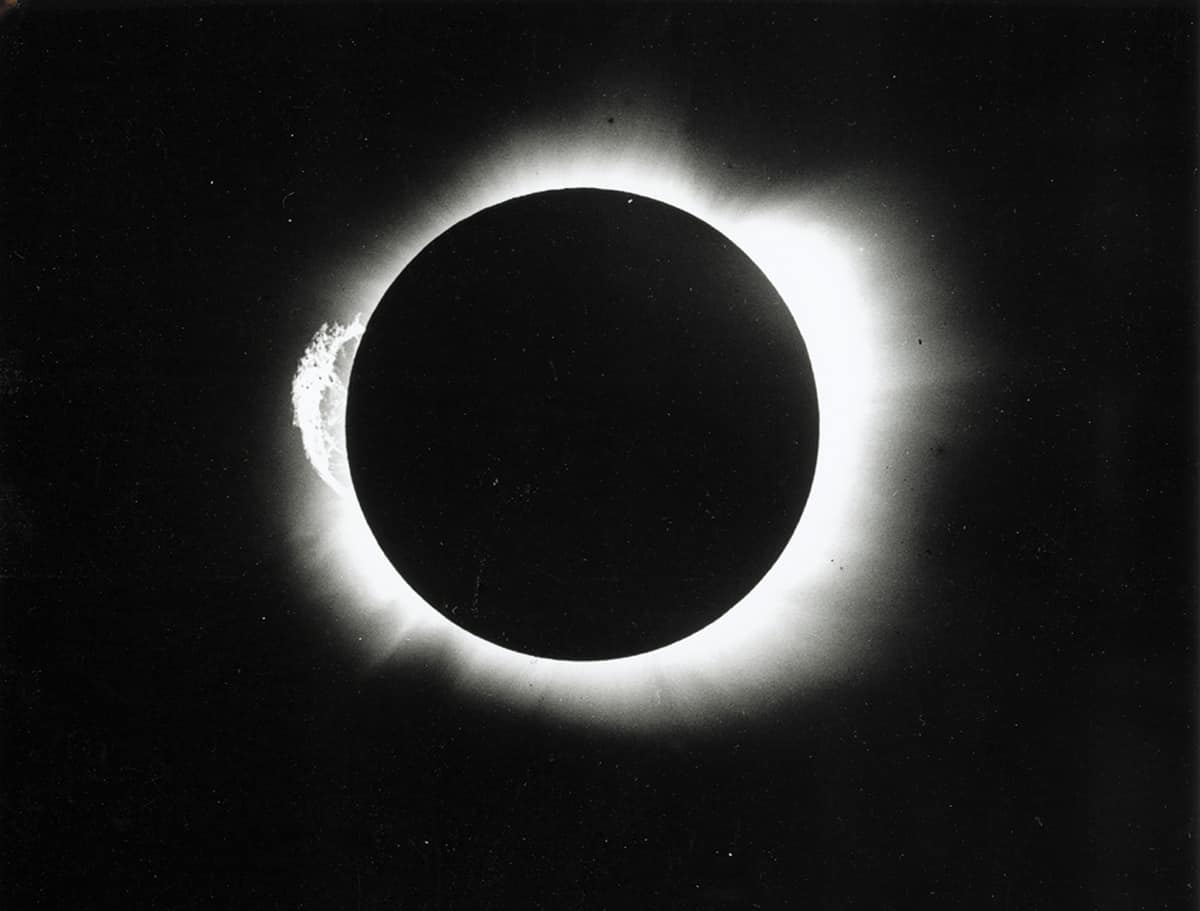
German science was far from welcome in Britain, however, and Eddington faced an uphill battle in spreading news about Einstein and relativity. At the time, the theory remained highly speculative, and required a definitive test: would light passing by the Sun be deflected, as Einstein predicted? Unfortunately, this test could only be carried out during a solar eclipse, since stars close enough to the Sun to show a measurable deflection would otherwise be swamped by the solar glare. In a stroke of great luck, the next eclipse was due to appear in May 1919 – just months after the end of the war.
The eclipse would only be visible in Brazil and West Africa, and Eddington’s tireless efforts to organize and actually carry out the observation have become legendary in the history of science. The expedition was ultimately successful in observing the gravitational deflection and confirming relativity. Einstein was launched to worldwide stardom by the expedition’s results and by Eddington’s avalanche of lectures, books and articles popularizing both the theory and its German originator (see Physics World January 2005 pp25–26).
It is sometimes suggested that Eddington’s internationalism led him to “fudge” the data from the expedition to ensure a positive result for Einstein. There is, however, no reason to think this was the case. Usually those proposing this myth claim that Eddington threw out results that were unfavourable to Einstein, but the analysis of the data from the eclipse expedition involved many other people beside Eddington. Moreover, copies of the photographic plates were distributed to astronomers around the world for them to analyse. No contemporary accused Eddington of altering the results – this is purely a modern myth based on a poor understanding of the optical techniques in use at the time. The influence of Eddington’s pacifism is to be found in his championing of the expedition as a scientific goal and his popularization of Einstein as a major scientific figure, not in manipulated data.
In the English-speaking world, Eddington’s expositions of relativity were so famous that his name was associated with the theory as often as that of Einstein. His name even appeared in one of Dorothy Sayers’ contemporary murder-mystery novels. An important part of Eddington’s popularity was his idiosyncratic wit (see box on page 35). According to one well-known anecdote, he was approached at a scientific gathering by a self-styled expert on relativity. “Eddington,” the party-goer commented, “they say only three people in the world understand relativity. What do you think?” (The speaker was, of course, referring to Einstein, Eddington and himself.) Eddington demurred, whereupon the “expert” pressed on: “Oh, don’t be modest Eddington!” To which Eddington replied, “Not at all, I’m just trying to think who the third might be.”
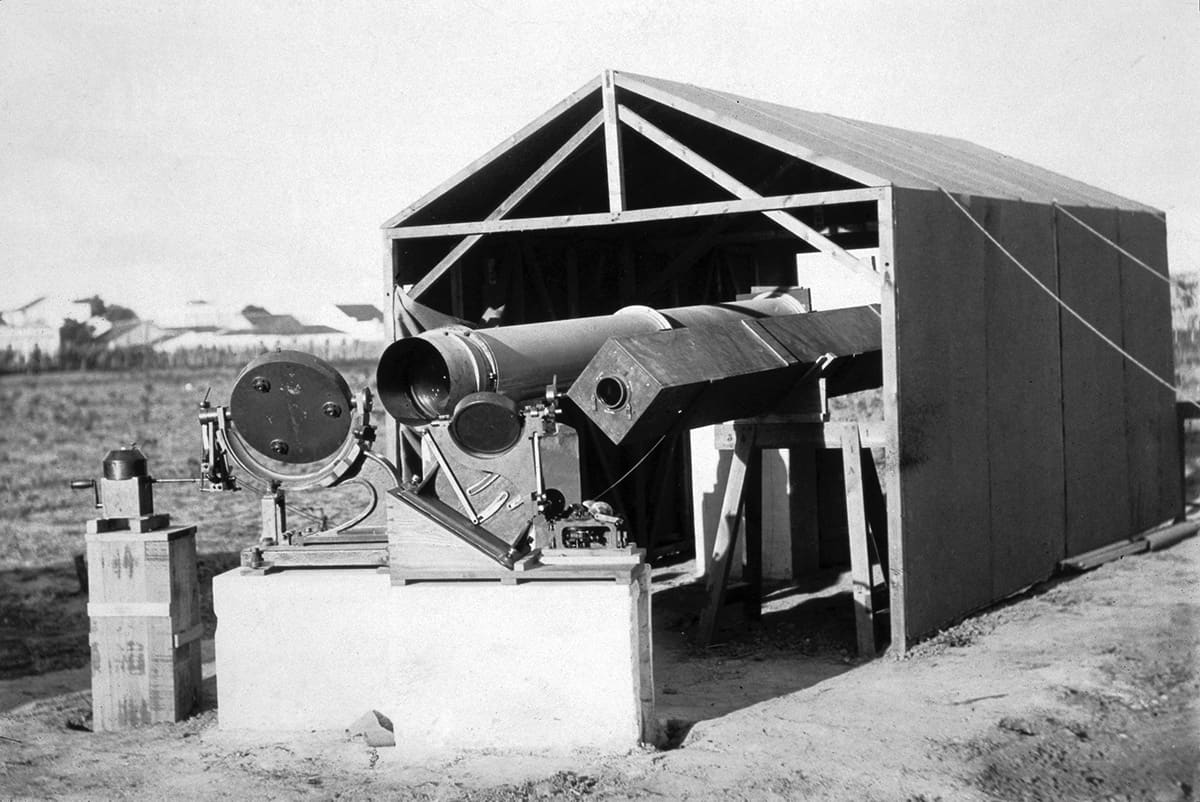
As one of the world experts in both relativity and astrophysics, naturally Eddington was involved in the development of the first generation of general-relativistic cosmological models. In 1927 he learned of a paper written by the Belgian astronomer-priest Georges Lemâitre that postulated an expanding universe. When he later became aware of Edwin Hubble’s work on the recession of the spiral nebulae, Eddington quickly became an enthusiastic supporter of an expanding-universe cosmology, pointing to the nebular recession as evidence of a curved space–time. However, he never accepted the argument that an expanding universe required a beginning and rejected what would later be known as the Big Bang as “too aesthetically abrupt”.
Eddington instead favoured a cosmology in which primordial material began at rest, was then nudged out of equilibrium by processes such as star formation, and then began to expand under the influence of Einstein’s proposed cosmological constant. Although the constant was abandoned by almost all cosmologists after the expanding-universe model was accepted, Eddington focused his attention on it even more closely. He saw it as one of the keys to understanding the relationship between relativity and quantum mechanics, and his insistence on its significance increasingly left him behind the cutting edge of cosmology.
Uniting science and religion
During the 1920s and 1930s Eddington became one of the best known spokesmen for science. He gave innumerable lectures, interviews and radio broadcasts on relativity and, later, on quantum mechanics. His books, including Nature of the Physical World and New Pathways in Science, were immensely popular with the public, not only because of his clear exposition, but also for his willingness to discuss the philosophical and religious implications of the new physics. Eddington’s clear and entertaining description of the content, method and meaning of science helped to inspire a generation of readers, including Fred Hoyle, Ralph Alpher and Thomas Gold, to become scientists themselves.
Among his most provocative claims was that there was no conflict between science and religion – and even that relativity and quantum mechanics supported a religious outlook. According to Eddington, these theories accepted that science could only address those parts of the universe that were quantifiable. Thus, he concluded, those elements of human experience that could not be described by mathematics, such as religion, aesthetics and love, were by definition outside science. Religious experience was therefore no less real than physical experience, and it should be judged solely on an individual’s mystical outlook rather than any kind of scientific analysis. Based on this philosophy, Eddington completely rejected any claims to prove or disprove religion via science. Rather, religion and science were different realms of experience that could neither validate nor support each other.
Eddington argued that science and religion shared a motivation and a method – they are both continual searches for knowledge
Eddington also argued that science and religion shared a motivation and a method. In particular, he argued, they are both continual searches for knowledge: the former in the spiritual world; and the latter in the physical world. Adopting an idea from his Quaker faith, he called this “seeking” – describing an outlook on knowledge that was not concerned with final truth and certainty, but rather emphasized the importance of the process of exploration itself. Searching, not finding, was the basis of both religion and science. He described them as coming from the most basic elements of what it meant to be human, and their shared reliance on seeking meant that what made a good scientist also made a good mystic (and vice versa).
These twin pillars of support for mysticism and human values from a major scientific figure were tremendously popular, and Eddington’s writings were devoured by young and old alike. He was knighted and received the Order of Merit, and was a household name by the end of his prolific career in the 1930s. He also became active in trying to refute Marxist claims to scientific legitimacy and spent several years as head of the National Peace Council, which worked for, among other things, British withdrawal from India.
Towards a final theory
As the 1930s progressed, Eddington spent increasingly less time on astrophysics and instead focused his energies on attempts at unifying quantum mechanics and general relativity. He saw these theories as fundamentally “epistemological” in character, meaning that they provided insight into how we see the world, rather than what the world is. After all, Einstein had began his investigations into relativity questioning how we measure categories like space and time, while Heisenberg had formed his uncertainty principle by asking precisely how we measure position and velocity.
Eddington therefore sought to extend these approaches by developing a complex mathematical formalism that would describe the methods by which humans could measure anything about the physical world. He hoped that he would be able to derive all the laws of physics from this scheme, without recourse to experimentation. This was widely condemned by many of his contemporaries as neo-Aristotelianism and number mysticism, and very few other scientists took up his formalism. On 22 November 1944 Eddington died suddenly of stomach cancer before he had completed this work, and his book Fundamental Theory was only published after his death.
Eddington’s legacy is complex. When his name appears in physics textbooks or popular histories, it is usually in reference to the 1919 eclipse expedition – often including unfair suggestions of fraud.
Eddington’s legacy is complex. When his name appears in physics textbooks or popular histories, it is usually in reference to the 1919 eclipse expedition – often including unfair suggestions of fraud. The collective memory of the physics community seems to remember him chiefly for his spectacularly failed attempts to unify relativity and quantum mechanics, and his controversies with Chandrasekhar; he is often invoked as a warning against dogmatic confidence in one’s own theories.
Astronomers and astrophysicists, however, remember him differently. They recall his pioneering work on the physics and constitution of stars, which was a crucial foundation for the progress of their disciplines in the 20th century. In an important sense, Eddington’s theoretical modelling of stellar processes showed that modern astrophysics was a feasible field of scientific inquiry. He left behind no school of students, but his techniques became fundamental to astronomy as we know it today.
As a figure who moved smoothly between different realms – physics and astronomy, science and religion, politics and pacifism – Eddington never left a definitive footprint in any one area. But as the figure who made Einstein famous, who took us inside stars and who inspired a generation of scientists, his contributions to modern science have been far-reaching. He was as reassuring to laypeople worried about the encroachment of science into their everyday lives as he was provocative to colleagues unwilling to try new approaches. His goal was not just to understand the universe, but to understand how we can better go about the practice of science. For him, profundity lay not just in the results: it was in how we approached the questions.
At a Glance: Arthur Eddington
- Born in 1882, Arthur Eddington was one of the world’s leading astrophysicists
- He developed a successful mathematical model of stars that was based on shrewd assumptions, rather than detailed physical knowledge
- Eddington shot to fame when his expedition to study the 1919 solar eclipse confirmed Einstein’s general theory of relativity
- In the 1920s and 1930s he became a respected popularizer of science
- A practising Quaker, Eddington saw much in common between science and religion
- His later years were spent on an ultimately unsuccessful attempt to unify relativity and quantum mechanics
More about: Arthur Eddington
A V Douglas 1956 The Life of Arthur Stanley Eddington (London, Nelson)
A S Eddington 1920 Space, Time, and Gravitation (Cambridge University Press)
A S Eddington 1928 Nature of the Physical World (Cambridge University Press)
M Stanley 2003 An expedition to heal the wounds of war: the 1919 eclipse expedition and Eddington as Quaker adventurer Isis 94 57–89


